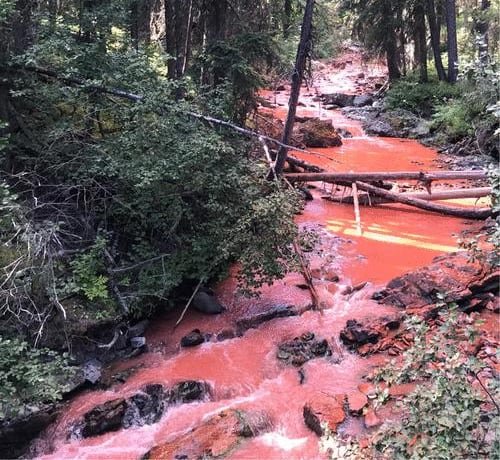The use of fire retardant solutions dropped from aircraft plays a vital role in combating wildfires, but concerns have been raised about their potential environmental impact, particularly on aquatic ecosystems.
When deployed, these retardants leave behind a reddish or pinkish liquid coating on surfaces like roads, roofs, and plants. This method, in practice since the mid-20th century, aids firefighters in controlling fires by cutting off oxygen supply to the flames, as explained by Jen Baron, a postdoctoral researcher at the University of British Columbia’s Centre for Wildfire Coexistence.
Since 2009, the B.C. Wildfire Service has been utilizing Phos-Chek LC-95A, a commonly used retardant produced by Perimeter Solutions, an American-based global manufacturer of firefighting products. Its primary component, ammonium polyphosphate, is a well-known fertilizer.
Additional ingredients, such as iron oxide, give the retardant its distinctive red color, assisting crews in identifying the areas where it has been applied.
The exact chemical makeup of the retardant, however, remains undisclosed.
“There is limited research on the environmental impact of retardants, but they are generally considered safe for both humans and the environment,” mentioned Baron.

Nevertheless, she highlighted restrictions on their application near water bodies due to potential risks posed by ammonia and phosphate to aquatic life.
“Direct entry of the retardant into water systems can lead to fish mortality,” Baron explained. Many fish species and amphibians are highly sensitive to ammonia salts, and the chemicals in the retardant can also trigger algae blooms that impact water quality and clarity, she added.
The B.C. Wildfire Service confirmed via email to CBC News and Radio-Canada that they have a policy prohibiting the release or deployment of fire retardant near water sources. They further stated that Phos-Chek LC-95A is diluted before use, with water making up nearly 90% of the solution.
A document from the B.C. Ministry of Environment and Climate Change Strategy regarding Phos-Chek usage asserts that when used following precautions and guidelines, the environmental risks are minimal.
Regulations and Unintended Incidents
Despite precautions, accidents can occur, and the impacts of retardants are not extensively researched, according to Uldis Silins, a forest hydrology professor at the University of Alberta focusing on Canadian Rockies watersheds for over two decades.

In 2020, Silins and his team investigated the long-term effects of retardants following an accidental release of Phos-Chek LC-95-A into North Racehorse Creek in southwest Alberta.
During firefighting operations for a small blaze under high-risk conditions, a segment of the waterway spanning 100 meters was inadvertently affected, Silins disclosed. Although the exact quantity dropped was unspecified, it was deemed “quite substantial,” he added.
A year later,
